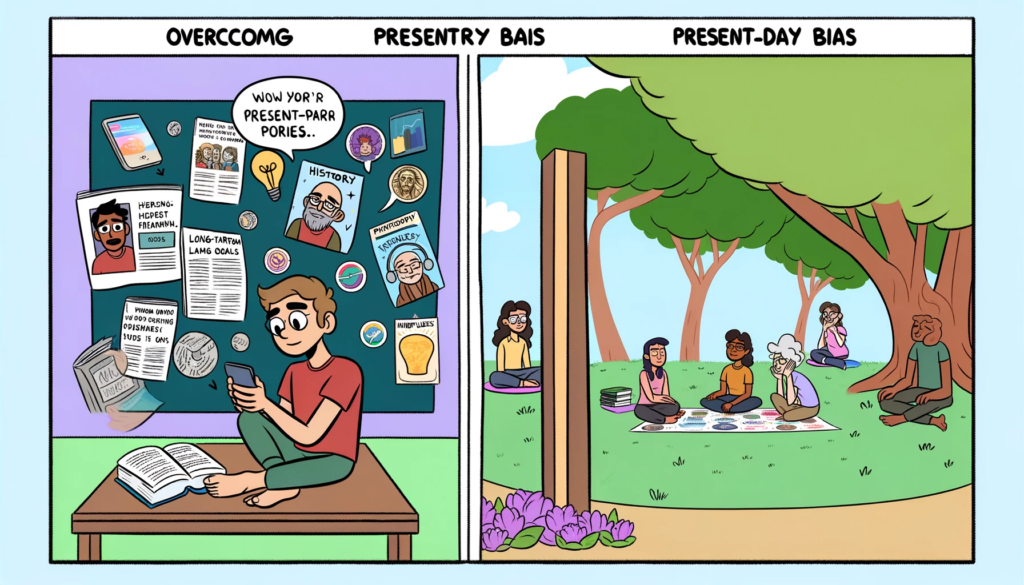
In today’s fast-paced world, where information is plentiful and opinions are even more so, it’s easy to fall into the trap of present-day bias. This cognitive bias leads us to overemphasize the importance and relevance of current events and trends, often at the expense of historical context or future implications. It’s a phenomenon that affects not just our personal lives but also how we perceive finance, technology, and even our pursuit of happiness. In this blog post, we’ll delve into the concept of present-day bias, explore its implications, and offer strategies for cultivating mindful fortitude against it.
Understanding Present-Day Bias
Present-day bias can manifest in various forms, from the investor who reacts impulsively to short-term market fluctuations, forsaking long-term investment strategies, to the individual who prioritizes immediate gratification over enduring satisfaction. In the realm of information technology, it’s the constant chase after the latest gadget or software, ignoring the sustainable and often more meaningful solutions that have stood the test of time.
The Impact on Our Lives
The consequences of succumbing to present-day bias are far-reaching. In finance, it might mean making decisions that feel right in the moment but are detrimental in the long run. For those seeking happiness and life lessons, it can result in overlooking the wisdom of stoicism and the value of experiences that only yield their treasures over time.
Strategies for Overcoming Present-Day Bias
1. Embrace Historical Context: Make a conscious effort to understand the past. Whether it’s the history of a technology, the evolution of a financial principle, or the philosophical roots of a happiness theory, knowing the ‘why’ behind the ‘what’ can offer invaluable insights and a more balanced perspective.
2. Focus on Long-Term Goals: In finance, technology, and life, setting and maintaining focus on long-term objectives can help mitigate the distractions of the present moment. This doesn’t mean ignoring current events but rather filtering them through the lens of how they serve your ultimate goals.
3. Cultivate Mindfulness: Mindfulness is a powerful tool for combating present-day bias. It encourages living in the moment but with an awareness that extends beyond the immediate. By being mindful, we can appreciate the present without being blinded by it, making decisions that are informed by both the past and the future.
4. Seek Diverse Perspectives: Often, present-day bias is reinforced by an echo chamber of similar opinions and sources. Actively seeking out diverse viewpoints can challenge our preconceptions and open our eyes to a broader spectrum of ideas, helping us break free from the myopia of the present.
Embracing Mindful Fortitude
Overcoming present-day bias requires what I like to call “mindful fortitude”: the strength to remain present and mindful amid the noise of the current moment, fortified by the wisdom of the past and a vision for the future. It’s about finding balance in our judgments, decisions, and how we live our lives.
In the end, navigating the waters of contemporary judgments is about more than just avoiding the pitfalls of present-day bias; it’s about charting a course that’s informed by a rich tapestry of experiences, knowledge, and perspectives. By cultivating mindful fortitude, we can aspire to lead lives that are not just reactive to the present but are reflective of the lessons of the past and mindful of the possibilities of the future.
